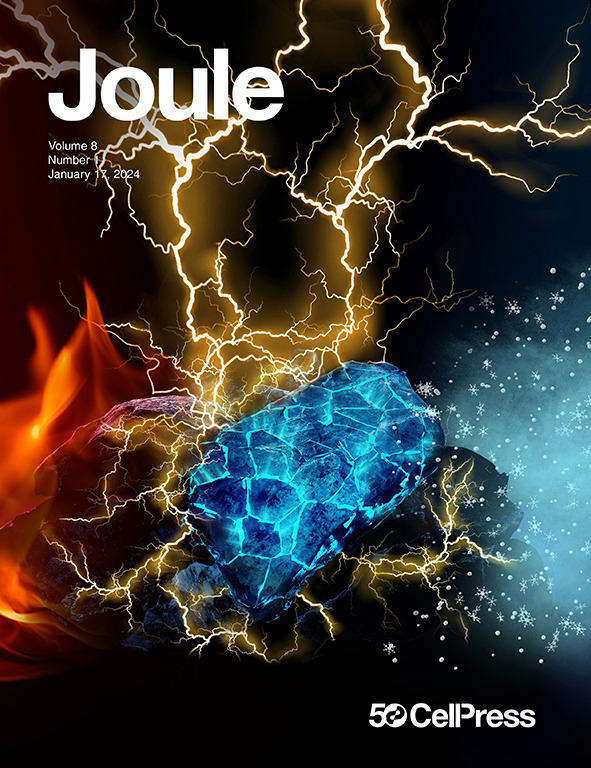Electrolyte design for aqueous Zn batteries
IF 35.4
1区 材料科学
Q1 CHEMISTRY, PHYSICAL
引用次数: 0
Abstract
Polarity scales are often used as descriptors for selecting organic molecules for aqueous Zn battery (AZB) electrolytes. However, failure to accurately predict the solvation of Zn2+ raises questions about their applicability for designing high-performance AZB electrolytes. Here, Dimroth and Richardt’s Et(30) polarity scale is introduced as an effective guideline for screening organic molecules. A clear volcanic correlation is demonstrated between Et(30) and Zn Coulombic efficiency (CE). This challenges the common consensus in the aqueous electrolyte design formula, which typically uses highly polar organic molecules to improve Zn CE, and indicates that the roles of organic molecules beyond altering the Zn2+ solvation structure are critical for obtaining high AZB performances. Based on the Et(30) scale, the designed electrolyte achieves a high average Zn CE (99.8%), an exceptionally long cycle life (5,500 h), and a high specific energy (110 Wh kg−1). Et(30) polarity scale offers general frameworks for selecting organic molecules in aqueous electrolytes.


水溶液锌电池的电解液设计
极性尺度通常被用作描述水锌电池(AZB)电解质中有机分子的选择。然而,由于无法准确预测Zn2+的溶剂化,这对设计高性能AZB电解质的适用性提出了质疑。在这里,Dimroth和Richardt的Et(30)极性尺度被引入作为筛选有机分子的有效指南。Et(30)与Zn库仑效率(CE)具有明显的火山相关性。这挑战了水电解质设计公式中的共识,即通常使用高极性有机分子来改善Zn CE,并表明有机分子的作用除了改变Zn2+的溶剂化结构之外,对于获得高AZB性能至关重要。基于Et(30)尺度,设计的电解质实现了高平均Zn CE(99.8%),超长循环寿命(5,500 h)和高比能(110 Wh kg−1)。Et(30)极性标度提供了在水性电解质中选择有机分子的一般框架。
本文章由计算机程序翻译,如有差异,请以英文原文为准。
求助全文
约1分钟内获得全文
求助全文
来源期刊

Joule
Energy-General Energy
CiteScore
53.10
自引率
2.00%
发文量
198
期刊介绍:
Joule is a sister journal to Cell that focuses on research, analysis, and ideas related to sustainable energy. It aims to address the global challenge of the need for more sustainable energy solutions. Joule is a forward-looking journal that bridges disciplines and scales of energy research. It connects researchers and analysts working on scientific, technical, economic, policy, and social challenges related to sustainable energy. The journal covers a wide range of energy research, from fundamental laboratory studies on energy conversion and storage to global-level analysis. Joule aims to highlight and amplify the implications, challenges, and opportunities of novel energy research for different groups in the field.
 求助内容:
求助内容: 应助结果提醒方式:
应助结果提醒方式:


